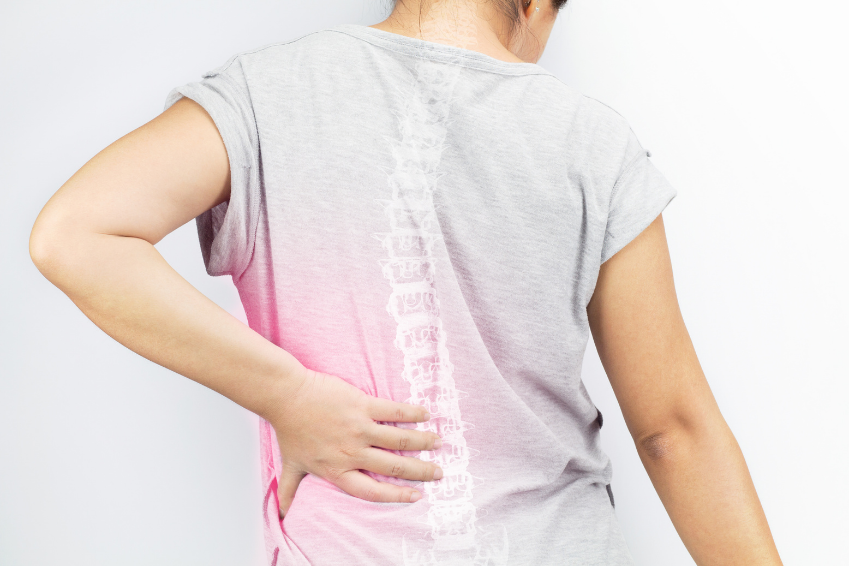
The spine, or backbone, is the body's central support structure. It connects different parts of the musculoskeletal system.
The spine aids in various movements such as sitting, standing, walking, twisting, and bending. Back injuries, spinal cord conditions and other problems can damage the spine and cause back pain.
Back/spine pain can be caused by various factors:
- Fractured or compressed vertebrae from a fall, stress of lifting or everyday activities
- Arthritis.
- Disc degeneration can be accelerated by smoking, occupational factors, bad posture or lack of exercise.
- Osteoporosis is caused by bones losing strength over time. It alone cannot cause back pain but can weaken the spine so that normal strain or minor trauma causes fractures.
Herniated Disk (Prolapsed Disk)
A herniated disk occurs when a disk ruptures out and pushes against the spinal nerves. The pressure on the nerve may cause pain, numbness, tingling and weakness in a specific pattern.
Causes
Disk herniation is most often the result of a gradual, aging-related wear and tear called disk degeneration. As you age, your disks become less flexible and more prone to tearing or rupturing with even a minor strain or twist. Most people are unable to pinpoint the cause of their herniated disk.
Signs & Symptoms
Most herniated disks occur in the lower back, although they can also occur in the neck. Signs and symptoms depend on where the disk is situated and whether the disk is pressing on a nerve. They usually affect one side of the body.
You can have a herniated disk without symptoms. You might not know you have it unless it shows up on a spinal image.
Risk Factors
Factors that can increase the risk of a herniated disk include:
Spinal stenosis is a narrowing of the opening in the spinal canal, often caused by bulging of the discs and/or enlargement of the joints and ligaments. This is common with age, and may cause pressure on the nerves, swelling, pain, numbness or weakness.
Arthritis (Osteoarthritis)
With age and normal wear and tear, the bones can rub together and cause inflammation and pain. When the bones rub, painful bone spurs (calcium deposits on the bone) can form. Your physician may refer to this as joint deterioration, joint narrowing, or bone on bone.
Spondylolisthesis/ Spinal instability
This is a bone defect or condition in which the vertebrae slips forward or backward. If left untreated, this can lead to deformity of the spine and narrowing of the spinal canal.
Typical symptoms include low back pain, muscle spasms, thigh or leg pain, numbness and weakness. However, some patients are asymptomatic and only learn of the disorder after spinal x-rays.
Note: Not all back pain is treated in the same way.

Wait a minute

Wait a minute